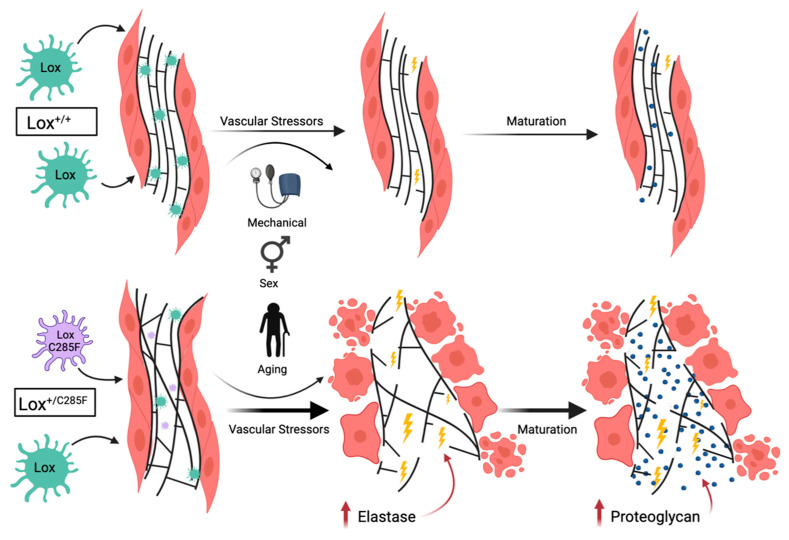Figure 10.
Lox C285F model results in structurally incompetent elastic fibers that are more susceptible to proteolytic damage causing progressive elastic lamellar damage and altered cell–matrix interactions. In the top row, Lox+/+ mice exhibit structurally competent elastic lamella (green Lox enzyme) with the expected mild degradation that accompanies aging and a lifetime of the mechanical stress associated with repetitive stretch–recoil cycles. The Lox+/C285F mutant mice, however, deposit structurally incompetent elastic fibers due to the mutated form of the enzyme (smaller purple Lox C285F with reduced enzyme activity). The abnormal lamellae are unusually susceptible to proteolytic damage and undergo increased destruction that is amplified by elevated blood pressure, male sex, and aging. An uptick of elastase (yellow lightning bolt), a morphologic change in the smooth muscle cells, and infiltration of the elastic lamellae with proteoglycans (blue dots) occur as part of the process. Of note, the aggrecan deposition occurs somewhat later, after elastic fiber breaks are more numerous. Although the deposition of proteoglycans may initially be a compensatory response, the molecules may ultimately further disrupt cell–matrix interactions leading to further vascular wall dysfunction.

